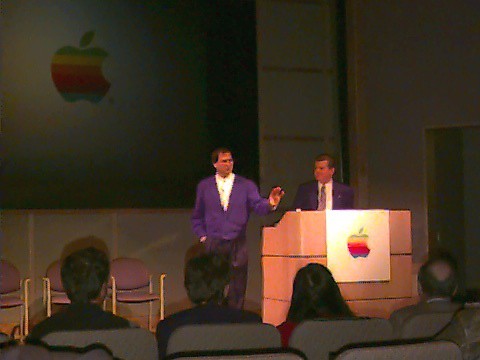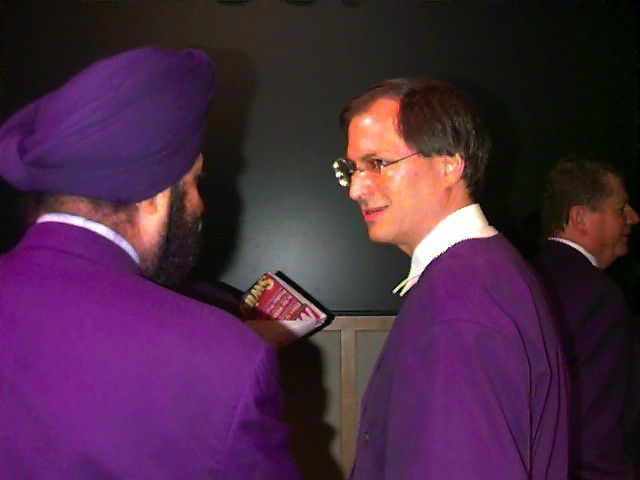 December 20, 1996: Apple Computer buys NeXT, the company Steve Jobs founded after leaving Cupertino a decade earlier.
December 20, 1996: Apple Computer buys NeXT, the company Steve Jobs founded after leaving Cupertino a decade earlier.
The deal costs Apple $429 million. It’s a massive price to pay for the failing NeXT, a computer company that already saw its hardware division crash and burn. But the price is worth it when you consider what Apple gets as part of the deal: the return of Steve Jobs.
Apple buys NeXT, sets up return of Steve Jobs
The Apple co-founder didn’t just come as part of the NeXT package. He was a major part of the deal. “I’m not just buying software, I’m buying Steve,” Apple CEO Gil Amelio said at the time. As part of the deal, Jobs got 1.5 million shares of Apple stock.
Jobs wasn’t initially intended to be Apple’s new CEO, though. Bizarrely, Amelio apparently thought Jobs could be contained as a creative force. Amelio figured he would continue running the company, and simply wheel out Jobs whenever Apple needed him.
Less than a year later, Amelio exited and Jobs became Apple’s new CEO.
Interestingly, one of the holdups in the Apple/NeXT deal was that Jobs didn’t want to commit to Cupertino for a set period of time. The argument came down to his leadership of Pixar, the animation studio that turned him into a billionaire just a year earlier.
This crucial part of the deal meant delaying an announcement that most reporters knew was coming. In the end, as everyone now knows, Jobs wound up working at Apple until the very end of his life. However, he managed to win the argument at the time by agreeing to act as an “informal adviser” at Apple, with no contract.
Steve Jobs’ triumphant return to Apple
In retrospect, Jobs’ return to Apple was the start of one of the greatest third-act comebacks in business history. At the time, success was anything but guaranteed. Apple was hemorrhaging money and headed for bankruptcy.
In 1992, four years before Jobs’ return, Apple stock hit $60 a share. But by 1996, AAPL had fallen to $17. To highlight just how poorly this reflected on Apple, bear in mind that this was during the tech bubble. Silicon Valley companies routinely saw their share prices double or triple, often without any justification in their earnings reports.
Still, Jobs had faith that he could undo some of the terrible decisions Apple had made (such as the horrendous “clone Mac” deal). But to the outside world, he was a visionary who had failed with NeXT. And, had Toy Story not transformed Pixar’s fortunes, he could have failed with that company as well.
Still, any reason to be cheerful about Apple was desperately needed in 1996 — and the nostalgic return of its exiled co-founder was good enough.
OpenStep: The NeXT step for Apple software
Jobs wasn’t the only thing Apple got from the NeXT deal. Yes, that drove up the price of the company at the time. But Apple also acqui-hired some impressive employees who became crucial to the company in the coming years. One still in Cupertino today (although he left for a 10-year period from 1999 to 2009) is Craig Federighi, currently Apple’s senior vice president of software engineering.
Significantly, Apple also got NeXT’s NeXTSTEP operating system, then called OpenStep. Since NeXT had ceased making its own hardware, the company no longer needed a proprietary OS.
This was another chief driver in the deal, since Apple was desperate for a new operating system after the bitter failure of its Copland project. (That supposedly next-gen OS never got any further out the door at 1 Infinite Loop than a beta version released to around 50 Mac developers a year earlier.)
OpenStep was an object-oriented, multitasking operating system based on Unix, which later became the basis for OS X and, subsequently, macOS. The importance of this part of the deal did not become evident until a few years later, when Apple released its new operating system as Mac OS X Server 1.0 in 1999. The consumer version, Mac OS X, followed in 2001.
Do you remember Jobs’ return to Apple? Leave your comments below.

Photo: Tim Holmes/Flickr CC


